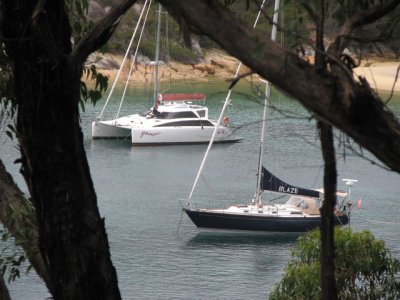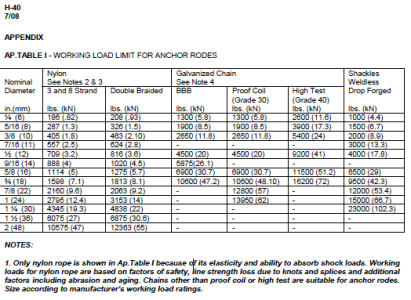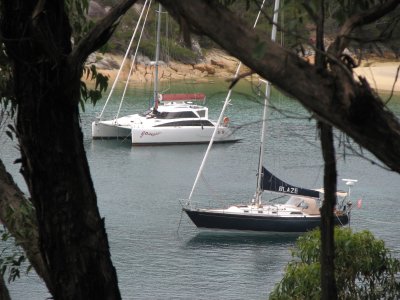thinwater
Well-known member
In the US the shouting would have begun with the title. Pure heresy. Only nylon should be used for rode (or chain, of course--let's not go there right now). Polyester does not stretch. But of course, it does, just not as much. The WLL of polyester is nearly double and chafe is about 2-3 times less.
How much nylon do you need to absorb surge? Or chain? Or polyester? The answer, of course, is that with the correct length, they can all work. In fact, it has been demonstrated that too much stretch an increase yawing, increasing rode tension.

A short length of polyester with just 3 meters of chain in shallow water is a jackhammer. Nylon is smoother. But what about deeper water where more chain and polyester would be deployed? Certainly, as a long extender on 200 feet or so of chain polyester would be a good choice. I wonder if the US habit is related to vast shallow areas, and lots of powerboats that don't use much chain, only a token.
It's difficult to even find polyester anchor rope in the US.
Discuss.
How much nylon do you need to absorb surge? Or chain? Or polyester? The answer, of course, is that with the correct length, they can all work. In fact, it has been demonstrated that too much stretch an increase yawing, increasing rode tension.

A short length of polyester with just 3 meters of chain in shallow water is a jackhammer. Nylon is smoother. But what about deeper water where more chain and polyester would be deployed? Certainly, as a long extender on 200 feet or so of chain polyester would be a good choice. I wonder if the US habit is related to vast shallow areas, and lots of powerboats that don't use much chain, only a token.
It's difficult to even find polyester anchor rope in the US.
Discuss.



